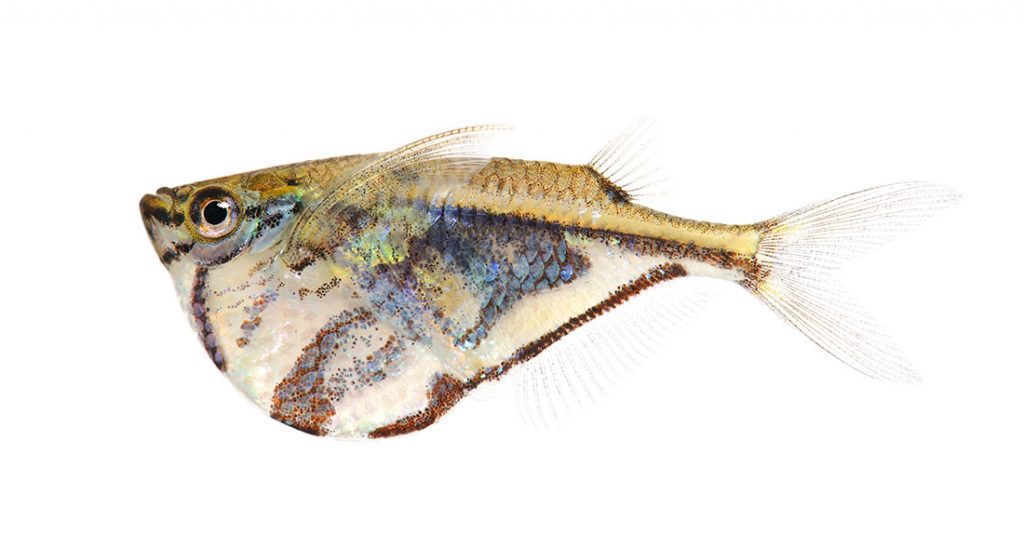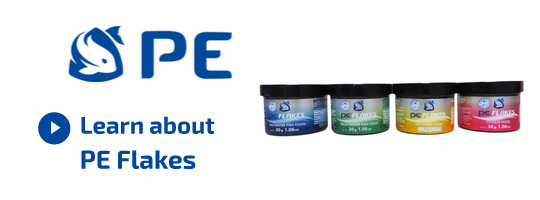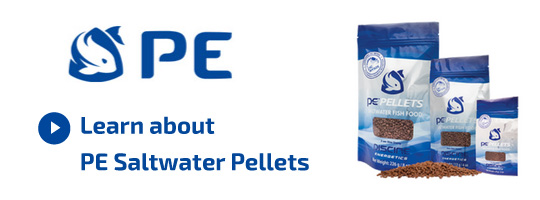Hatchetfish Species
Hatchetfish are a highly specialized, small sub group of the Characiformes. All the known species of hatchefish belong in the family Gasteropelecidae, containing three genus. Hatchetfish are often kept in aquariums due their active swimming at the water surface, unique appearance and ability to be kept in a community tank. They are a very frequently kept fish in community tanks as they spend much of their time cruising at the water surface, livening up the upper strata of the aquarium.
There are only two species of hatchetfish commonly available in the aquarium trade, the Marbled Hatchetfish (Carnegiella strigata) and the Silver Hatchetfish (Gasteropelecus sternicla).
Biology
Hatchetfish are native to Panama and South America. In their natural range, they are found in schools, living directly below the water surface where they wait for falling insects or other food items. One of the most fascinating aspects of the hatchetfishes is their ability to seemingly fly across the surface of the water, and even fly through the air for short periods of time. They have a very deep chest, with large pectoral fins that allow them to gain propulsion with quick, strong beats of their fins.
Captive Care
Hatchetfish can make great aquarium inhabitants, provided their husbandry needs such as diet, water quality and tank space are met. One of the most important aspects of keeping hatchetfish is a well fitted tank cover. Due to their tendency to jump, particularly when startled, it is critical that the entire tank have a well fitted lid to prevent the hatchefish from ending up on the floor.
Hatchetfish are considered somewhat delicate, particularly in regards to water quality. They prefer soft acidic conditions as well as good filtration. They prefer a temperature range of 74F to 80F. Hatchetfish can be excellent members of a community aquarium, however it is important to avoid any overly boisterous or aggressive fish. Due to their propensity to leap when frightened, large fish are best avoided as tank mates as their presence may startle the hatchefish into jumping. Some good choices of tankmates include species such as peaceful tetras and cory cats.
Suggested Piscine Energetics Products
We suggest a diet based on Piscine Energetics Frozen Mysis, Piscine Energetics Frozen Calanus, Piscine Energetics Pellets (1mm and 2mm) and Piscine Energetics Saltwater Flakes.
What People Say
After feeding my seahorses your mysis for about 3 months; they are fat and happy!!! they give me baby seahorses (at least 300 ) each 14 days... So I'm very satisfied of your mysis.The frozen mysis is about 70 per cent of their diet.
Yvan Charbonneau Quebec
I am keeping these Indian mudskippers -- very cute -- about 3-4 inches long. I've been feeding them frozen bloodworm, and decided to try them on mysis. I feed them in a "shallows" in the 150 I have set up for them. The minute the mysis hit the water they were on it, frozen and all. They gorged until their little bellies were almost bursting. I have yet to see an aquatic creature that does not go absolutely nuts over PE Mysis.






